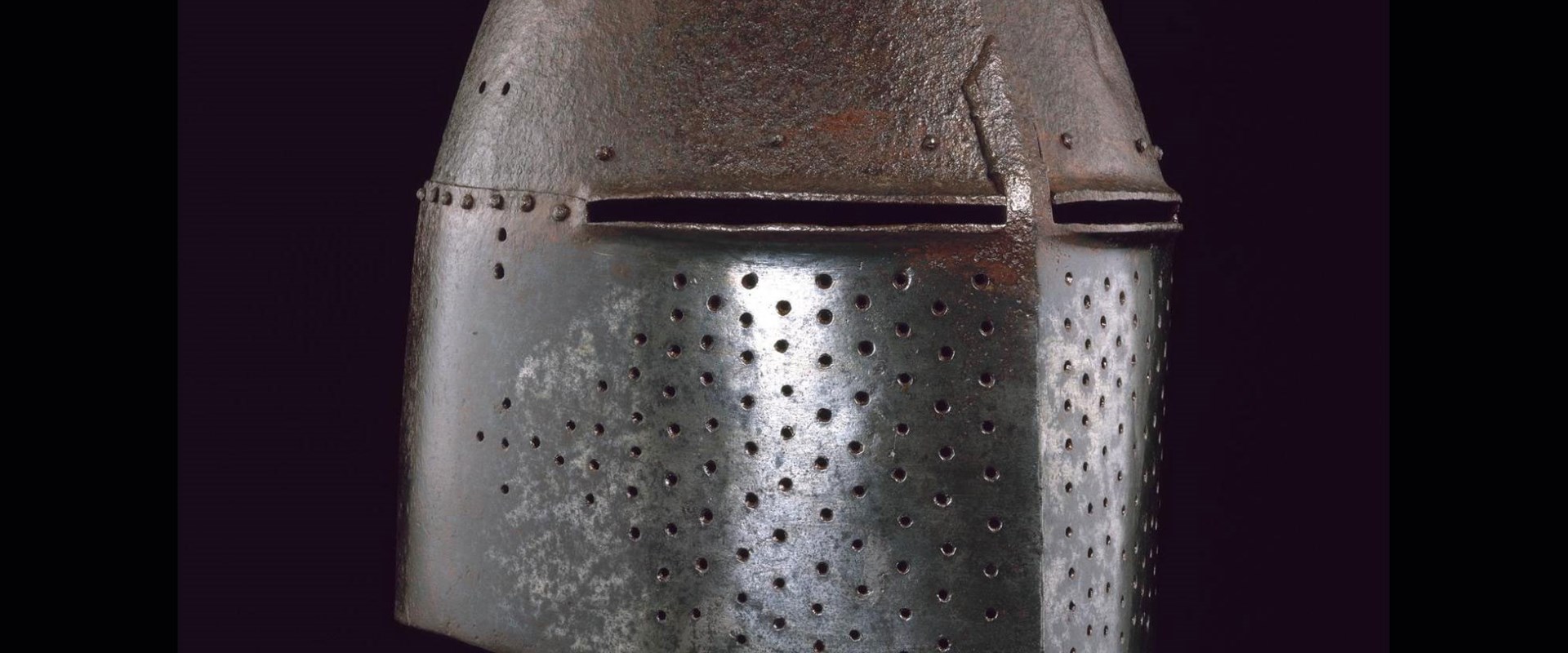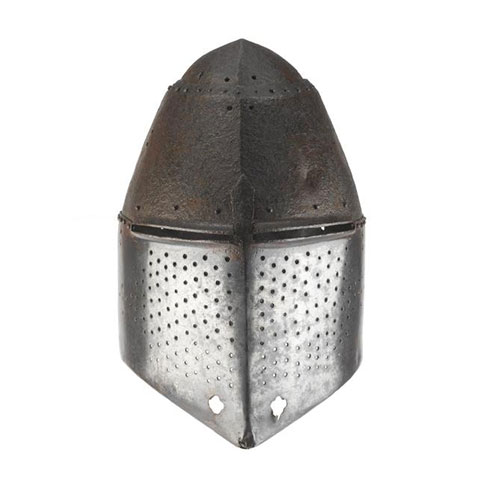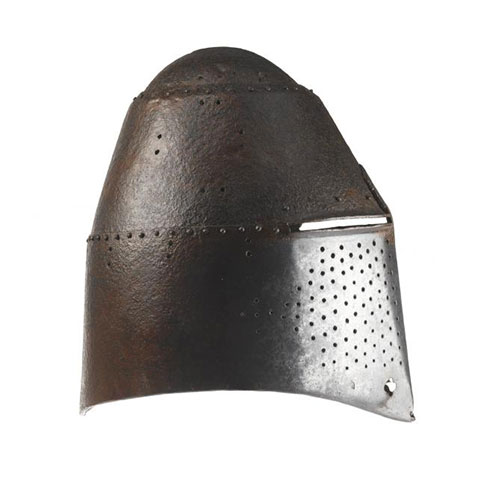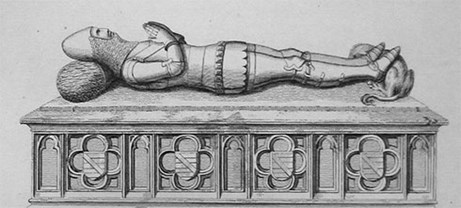Key in a search term below to search our website.
Key in a search term below to search our website.

This 14th-century great helm belonged to one of King Edward III's knights, Sir Richard Pembridge (d.1375), who fought in the Hundred Years' War between England and France. It is of the type that would have been worn at the Battles of Crecy in 1346 and Poitiers in 1356.
Date
14th century
Made from
Steel
Owned by
Sir Richard Pembridge (d.1375)
Museum reference
On display
Window on the World, Level 5, National Museum of Scotland
Did you know?
The helm is one of only four 14th-century knights’ helmets to survive.

The helm was placed above Sir Richard’s tomb in Hereford Cathedral, as a symbol of his authority and a reminder of his military distinction.
Constructed from three plates of steel riveted together, the helm was designed to deflect attack. A low crown plate is overlapped by a sloping plate shaped like a truncated cone, in turn overlapped by a vertical plate made all in one piece. The raised edges of the eye holes give extra strength and protection. Chains with toggle ends were passed through the cross-shaped holes to attach the helm to the breastplate.
The helm has traces of a leather lining to which a padded fabric lining would have been stitched. It may have been borne directly on the head, worn over a cloth arming cap or over a mail hood or coif. Internal padding, secured between the holes in the sides, ensured a snug fit. Sir Richard’s identifying crest, a wheatsheaf, was attached through holes at the top. The style of the helm is both effective in defence and deliberately sinister, to intimidate opponents.

Sir Richard came from a Herefordshire family. One of Edwards III’s most distinguished captains during the French wars, he fought at Sluys (1340) and Poitiers (1356) and was made a Knight of the Garter in 1368. In later life, Sir Richard became a prominent courtier, politician and civil servant. He amassed a fortune and left detailed instructions for his elaborate tomb.
In 1822 the Dean and Chapter of Hereford Cathedral presented the helm to Sir Samuel Rush Meyrick, the first modern collector of arms and armour. It was acquired in the 1870s by the Scottish painter Sir Joseph Noel Paton, most of whose large collection of arms and armour and antiquities came to the Museum after his death in 1901.

Above: Tomb of Sir Richard Pembridge in Hereford Cathedral. Published in Sepulchral Monuments in Great Britain Volume 2 by Richard Gough. London: T. Payne and son, 1796.